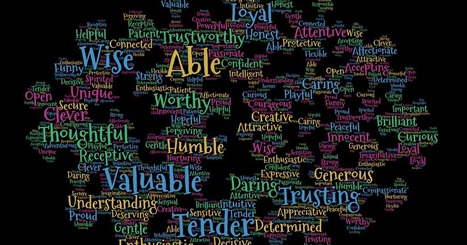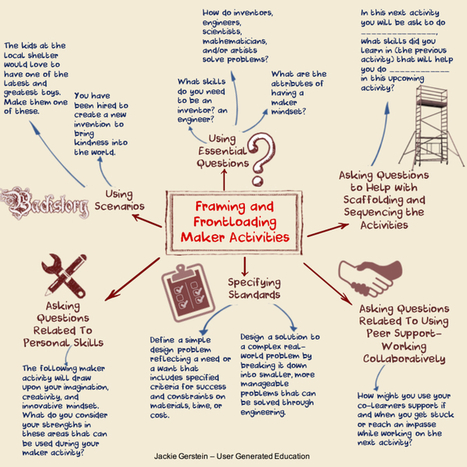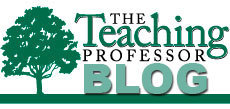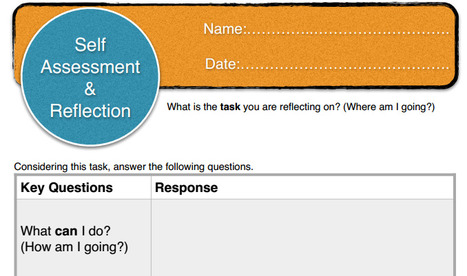 Your new post is loading...
 Your new post is loading...
A really useful resource from the University of Edinburgh: a Reflection toolkit with material both for those doing the reflection and for those facilitating or assessing reflection. Additionally there is a literature review on reflection, and a substantial bibliography.
Via Elizabeth E Charles
Real learning happens when learning “sticks.” Employing solid learning retention activities with your learners means using tools you can call on anytime to help students remember learning. The learning retention activities offered in the TeachThought article 15 Reflection Strategies To Help Students Retain What You Just Taught Them are among the simplest and the best for every teacher to use. Each one encourages the natural reflection process that helps our students absorb learning effectively.
Via Elizabeth E Charles
In his book, The Power of Habit, Charles Duhigg describes keystone habits as,“small changes or habits that people introduce into their routines that unintentionally carry over into other aspects of their lives." Reflection has been one
Via Ana Cristina Pratas, Miloš Bajčetić
Thinking about Thinking Optimizes Learning
Most teachers know that if students reflect on how they learn, they become better learners. For example, some students may think and process information best in a quiet library; others may focus better surrounded by familiar noise or music. Learning strategies that work for math may be different from those applied in the study of a foreign language. For some, it takes more time to understand biology than chemistry. With greater awareness of how they acquire knowledge, students learn to regulate their behavior to optimize learning. They begin to see how their strengths and weaknesses affect how they perform. The ability to think about one’s thinking is what neuroscientists call metacognition. As students’ metacognitive abilities increase, research suggests they also achieve at higher levels.
Metacognition plays an important role in all learning and life experiences. Beyond academic learning, when students gain awareness of their own mental states, they begin to answer important questions: How do I live a happy life? How do I become a respected human being? How do I feel good about myself? Through these reflections, they also begin to understand other people’s perspectives. Learn more / En savoir plus / Mehr erfahren: http://www.scoop.it/t/21st-century-learning-and-teaching/?&tag=reflection http://www.scoop.it/t/21st-century-learning-and-teaching/?&tag=Psychology http://www.scoop.it/t/21st-century-learning-and-teaching/?&tag=Metacognition
Via Gust MEES
By: Maryellen Weimer, PhD in Teaching Professor Blog "One of the best gifts teachers can give students are the experiences that open their eyes to themselves as learners. Most students don’t think much about how they learn. Mine used to struggle to write a paragraph describing the study approaches they planned to use in my communication courses. However, to be fair, I’m not sure I had a lot of insights about my learning when I was a student. Did you?
As fall courses start to wind down, it’s an apt time for reflection. Here are some pithy (I hope) prompts that might motivate students to consider their beliefs about learning."
Via Miloš Bajčetić
"Next gen tools provide meaningful ways teachers and students can explore, question, reflect and share–leading to Deeper Learning and blended and personalized opportunities for students. Here are 25 ideas for using next gen tools this year in your classroom."
Via Beth Dichter, Rosemary Tyrrell, Ed.D.
The role of reflection is vital to retention and helping people integrate what they learned. Reflection is also one of the best ways to improve performance.
Via diane gusa
A website to support Reflection in Education K-16 The following technologies can support reflection: web logs (‘blogs’) as reflective journals, wikis as collaborative websites, digital storytelling/podcasting, Twitter and social networks.
|
Reflection could also be described as the ‘opposite’ of activating prior knowledge. Reflection is functional neurologically (reinforcing learning as a ‘memory), but also useful as a practice, helping students understand the scale and value of what they just experienced.
Maker Education is no different–in fact, Maker Learning may benefit even more from reflection than more traditional academic experiences due to the fail-forward/try-again persistence required by this approach. (Check out our Maker Education resources for more reading.) Jackie Gerstein is one of our favorites here at TeachThought, and her usergeneratededucation site is a must-bookmark for all teachers.
So, on to the questions for reflection in Maker Learning. Below, Jackie has written 23 possible reflection questions to get you started. Share any others you’d recommend in the comments.
Via John Evans
Educational feedback though, has two main areas: assessing students and teacher evaluation. These may be complimentary (or not), but very much a feature of many educators' days. In this sense, I'd like to share the following infographic on the types of feedback which is possible to give learners and further on, a couple of suggestions on feedback and professional development for educators.
Via Elizabeth E Charles
When educators take the time to explicitly frame the maker activities and build meaningful reflection in at the end, they're helping to ensure kids are reaching
Via John Evans, Dean J. Fusto, Elizabeth E Charles
Learning is more than just asking questions and getting answers (whether through social media or a search engine), there’s an active component to learning that is too often forgotten. When I look at the tools in the Top 100 tools for learning, I see some reflective tools, e.g. writing, but I may be one of the few who’s talking about diagramming tools, and I think that’s important. Not diagramming, per se, but representation tools that allow us to express our understanding.
So in my mind learning is action and reflection, with two nuances. The first notion is that the action/reflection cycle is the process, not the outcome. The outcome, technically, is a new response to the same stimuli. In short, we act and reflect to develop our ability to do something different and presumably better. The second is that this is separate from instruction, which is designed action and guided reflection. Self-learning, however, requires self-designed action and self-guided reflection. Learn more / En savoir plus / Mehr erfahren: https://gustmees.wordpress.com/2014/10/03/design-the-learning-of-your-learners-students-ideas/ http://www.scoop.it/t/21st-century-learning-and-teaching/?tag=reflection
Via Gust MEES
One of the best gifts teachers can give students are the experiences that open their eyes to themselves as learners. Most students don’t think much about how they learn. Mine used to struggle to write a paragraph describing the study approaches they planned to use in my communication courses. However, to be fair, I’m not sure I had a lot of insights about my learning when I was a student. Did you?
Via Becky Roehrs
"Next gen tools provide meaningful ways teachers and students can explore, question, reflect and share–leading to Deeper Learning and blended and personalized opportunities for students. Here are 25 ideas for using next gen tools this year in your classroom."
Via Beth Dichter
Each course in the E- Learning and Online Teaching Graduate Certificate program is eight weeks in length. I am amazed at what 40 weeks of learning can produce in a well designed program. Reflective journaling is a learning activity that promotes metacognition and is an integral part of the certificate program.
"I have been working on a tool for students to do a self assessment/reflection and feedback...The tool is based around the work of Stephen Dinham which is used be DET NSW and New Zealand eductors John Hattie & Helen Timperley."
Via Beth Dichter
Reflective Teaching is a habit of mind that requires consciously thinking about how teaching practices impact students’ learning. Reflection is a tool to self-assess your practice. Once you have collected this information, plan a course of action so that you can implement change. You might decide to find more research on an area where you need improvement, attend a conference, or read magazines or books related to the topic for which you are seeking information. Once you begin to implement changes be sure you take the time to reflect once again. ===> Reflection is a continuous cycle that begins once you develop the habit of mind to think about your practice. <===
Via Gust MEES, Anna Hu
|



 Your new post is loading...
Your new post is loading...








































